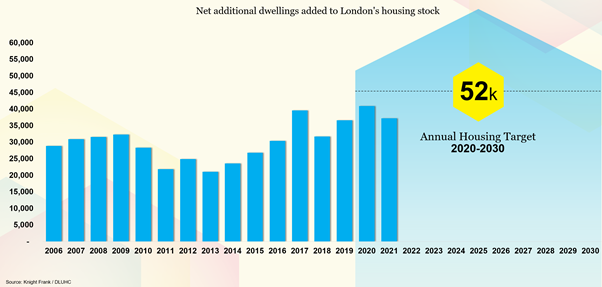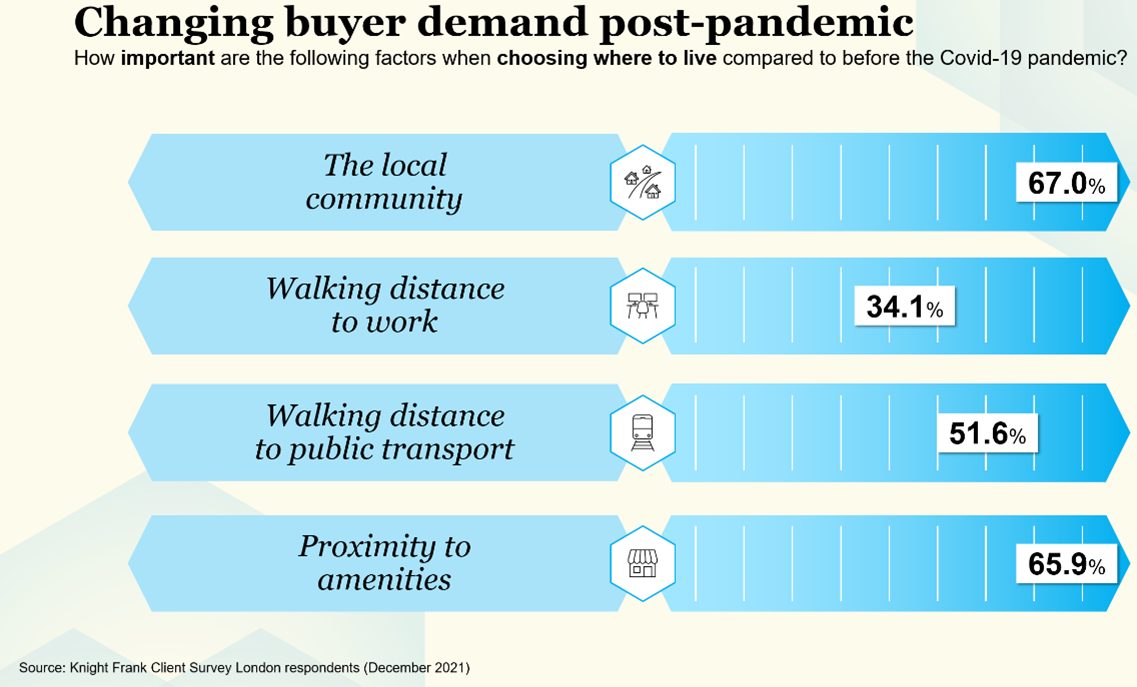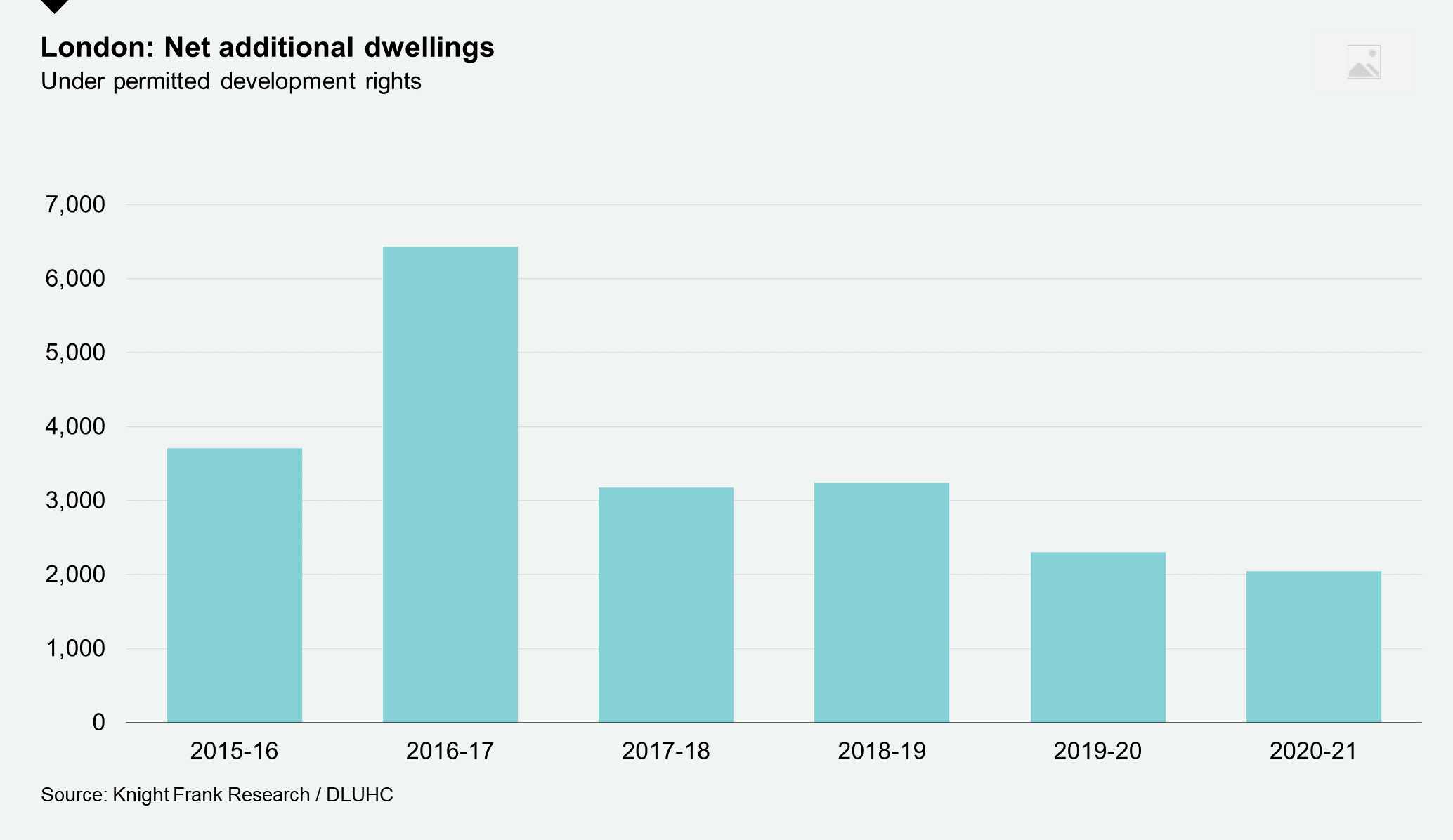From No Use to Mixed-Use
One legacy from the pandemic has been confirmation that the best places are not separate commercial or residential districts. The best places are those that provide a dynamic mix of living, working and leisure activities.
4 minutes to read
Striking the right balance
For cities, and for London in particular, this presents an opportunity. For years developers have been doing a good job of creating mixed-use neighbourhoods, from King’s Cross to Battersea, or what’s coming in Brent Cross, Brentford and Tottenham.
But the city centre has long been dominated by office and retail sectors. While this will remain the case, changing working and shopping habits point to the need for more balanced mix in the future.
Part of the solution lies in making better use of the buildings we have. Repositioning or repurposing existing assets for alternative use. Logistics, residential and life science are obvious beneficiaries.
Take residential as an example. London is falling short of delivering the homes it needs. Last year, 37,000 new homes were added to the capital’s housing stock, a drop of 9% on the previous year, and a figure notably below the 52,000 homes the Mayor’s London Plan says are needed annually to meet demand.

A decline in starts, permissions and applications over the last few years means future housing delivery will remain some way short of targets. Could repurposing buildings, or delivering mixed-use, mixed tenure schemes that suit post-pandemic behaviours help fill the gap?
Changing requirements
Repurposing redundant or secondary assets in central London is particularly relevant as changing buyer and tenant requirements drive a resurgence of demand. Knight Frank figures point to the number of new prospective buyers currently looking to buy in the capital running 67% above the five-year average in the first few weeks of January, for example, while rents in central London are up 8.2% in the second half of 2021 alone, their highest growth in a decade.
Longer-term, nearly two thirds of Londoner’s who responded to our latest Knight Frank client survey suggested that, when it came to finding somewhere to live, proximity to local amenities is more important now than it was pre-pandemic. Some 67% said the local community is more important than previously, and there was a noticeable uptick in the importance placed on walkability, something we have explored in our article ‘Steppin’ Out into London’s Walkable Business Districts’

Mixing uses
There is a precedent for repurposing assets to residential in London. Data from the Department for Levelling Up Housing and Communities (DLUHC) shows that nearly 21,000 homes have been delivered over the last six years under permitted development rights in London.

And the concept of mixed-use spaces is nothing new. In recent years, London has diversified away from developments dominated by a single use. Regeneration hubs such as Battersea Power Station, Elephant Park and Canary Wharf have all adapted their offer through the evolution of the original planning permission.
Looking forward, major new mixed-use hubs targeting a full breadth of occupiers, workers, and visitors are planned in other parts of the capital including in Euston, the Southbank and Canada Water.
Yet the question remains: if the data is telling us that we have a consistent issue with undersupply across London (within both the residential and commercial sectors), will building mixed-use help or hinder the drive for more space? Indeed, on paper, mixed-use schemes reduce supply, diluting planning applications for single-use schemes by introducing a range of other uses.
Despite these apparent disadvantages, however, mixed-use schemes remain extremely compelling. So why is this?
Firstly, consumer demographics play an important role. As mentioned earlier, people want to both live and work in versatile, dynamic locations that offer more than just one use. Flexibility is also an important consideration – including flexibility on delivery strategy, flexibility on funding, and flexibility on timing. Mixed-use can accelerate delivery through partnerships whilst reducing exposure to market risk for any given sector.
And finally, mixed-use schemes are generally more viable – particularly for residential. The hardening planning position of the Mayor of London has left no doubt that the drive for affordable housing and affordable workspaces are key drivers of land value.
Investors like it too. Last year, institutions spend £1.2 billion acquiring and funding build to rent (BTR) stock in the capital with nearly half of the deals struck backed by overseas capital. There are nearly 50,000 BTR units in the development pipeline in London due to be delivered in the coming years, some within mixed-use, mixed-tenure schemes.
What has become increasingly obvious is that building mixed-use is about so much more than simply meeting demand. It is vital to create a modern city fit for post-pandemic life. As well as making better use of limited land availability, there is evidence that connecting people with amenity and infrastructure can have a positive impact on capital values and rents and, longer-term, supports the creation of communities.
There is no ‘one-size-fits-all’ approach; location, demand and local infrastructure will inform what is viable but, looking to the future, the next opportunities will lie in schemes and in areas that start evolving into a balanced, resilient, and sustainable mix of real estate.
Watch the virtual London Breakfast event on demand.
Download the London Report 2022